|

On eBay Now...
Countess Maria Zichy (1883-1977): Letters Vienna 1958 & ROM 1959, Over Cardinal For Sale
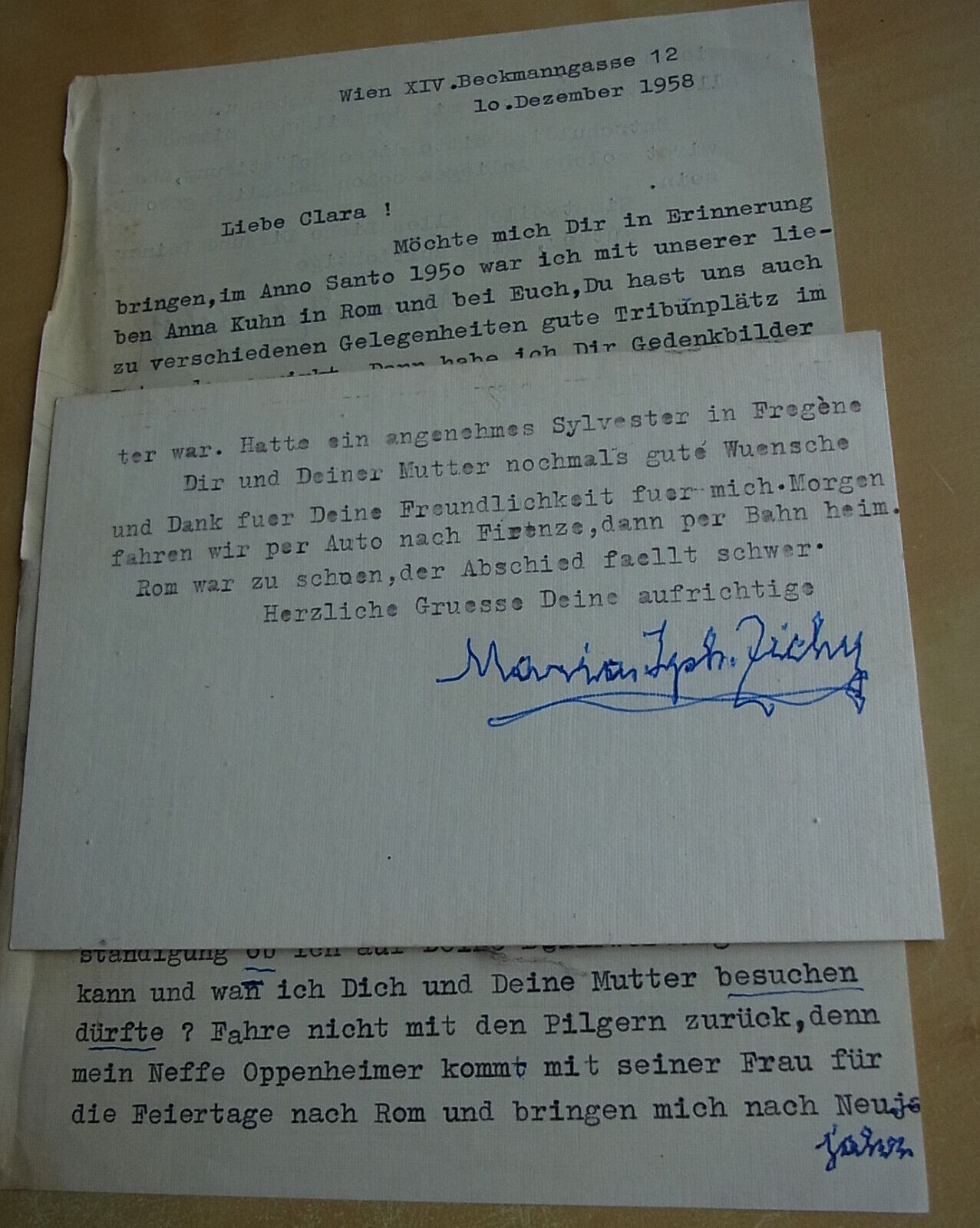
When you click on links to various merchants on this site and make a purchase, this can result in this site earning a commission. Affiliate programs and affiliations include, but are not limited to, the eBay Partner Network.

Countess Maria Zichy (1883-1977): Letters Vienna 1958 & ROM 1959, Over Cardinal:
$21.33
Countess Maria Zichy (1883-1977): Letters Vienna 1958 & ROM 1959, Over CardinalThe description of this item has been automatically translated. If you have any questions, please feel free to contact us.
They offer on two typewritten, signed letters of nobility from 1958/59 out of Viennaand Rome.
Written by Maria Countess Zichy von Zich and Vásonkeő (1883-1977), daughter of Hungarian traveler, politician and governor of Fiume Ágost Zichy (1842-1925).
Aimed ata friend named Clara, that one countessClara Ledochowska(*26. June 1911 in Sarns near Brixen), secretary at the Austrian embassy at the Holy See (Vatican).
1.) 1 ½-page A5 letter, dated Vienna, 10. December 1958. Without envelope. Concerns the upcoming cardinal consecration (on December 15th). December 1958 in Rome) from Franz König (1905-2004), Archbishop of Vienna, for whom Maria Zichy requests \"two good places\".
2.) 2-page letter card (9.8 x 14.8 cm), dated Rome, 2. January 1959. Concerns the 21-year-old waiter Renato Sellerini, for whom she is looking for a new job, and “my devotional items,” which “are still from St. were consecrated to the Father. Her nephew Oppenheimer is mentioned.
Condition:Paper browned, letter stained and wrinkled. Each with ballpoint underlining. Please also note the pictures! Internal note: Clara L. 63 Adel
About her father and Cardinal Franz König (source: wikipedia): Ágost (August) Count Zichy of Zich and VásonkeO(*14. June 1852 in Penzing near Vienna; † 4. October 1925 in Vienna) was a Hungarian traveler, politician and governor of Fiume. Life:József Zichy was born in 1841 in Penzing (now part of Vienna) as the son of the camouflage master Franz Zichy and Maria Clara Demblin. After studying law and completing his doctorate in Vienna and Budapest he undertook long journeys to Asia and America with his older brother József Zichy between 1875 and 1877, including to the Dutch East Indies, British Ceylon, Japan and China. In 1879 he became a member of the Reichstag for the Szempc constituency in Pressburg County. From 1883 to 1892 he was governor of the city of Fiume on the Adriatic and became an ex officio member of the House of Magnates.
Franz König, in terms of protocol also Franz Cardinal König (* 3. August 1905 in Warth near Rabenstein; † 13. March 2004 in Vienna) was Archbishop of Vienna from 1956 to 1985. Life Origin: Franz König came from a farming family in Rabenstein an der Pielach in Lower Austria. His father was Franz König (*7. September 1867; † 4. June 1913; buried in Rabenstein)and his mother was Maria König (née Fink; * 21. April 1878 in Kirchberg an der Pielach; † 29. April 1967 in the Archbishop\'s Palace in Vienna; buried in Rabenstein). The two had on the 8th Married June 1903. The mother\'s second marriage was to the mountain farmer and politician Johann Kaiser. Franz König was the second of seven children from his mother\'s marriage to Johann König. There were also the siblings Maria (*7. July 1904; † 16. July 1904), Ferdinand (* 14. November 1906; † 13. March 1979 in St. Pölten; buried on the 17th March 1979 in Rabenstein), Aloisia (* 19. November 1907; † 11. December 1978 in St. Pölten), Gottfried (* 10. April 1909; † 30. November 1969 in Vienna), Ludwig (* 18. July 1910; † ?) and Friederica (* 23. August 1911; † 29. January 1998 in Vienna). There are no known children from the mother\'s second marriage. His paternal grandparents were Gottfried and Juliana König (née Eder); the maternal grandparents were Erasmus Fink and Barbara Fink (née Kalteis). On the 5th In August 1905 he was baptized in the parish church of Rabenstein an der Pielach. Educational path and studies: König attended the Melk collegiate high school, which he completed with excellent success with a Matura thesis in Latin. He studied in Vienna, at the Institut Catholique in Lille and then in Rome, where he became a doctor of philosophy. On the 27th. In October 1933 he was ordained a priest in Rome by the archpriest of the Lateran Basilica, Cardinal Francesco Marchetti Selvaggiani. First years as a priest: From 1934 to 1937 he worked in his home diocese as a chaplain in Altpölla, Neuhofen an der Ybbs, St. Valentin and Scheibbs in practical pastoral care at the grassroots level. During this time he also completed his theological studies and received his doctorate in 1936. theol. doctorate. During the Nazi era he was a cathedral curator in Sankt Pölten, and in 1945 he was a professor of religion in Krems. In 1948 he was appointed associate professor of moral theology at the Catholic Theological Faculty in Salzburg for four years. During his time in Salzburg, König taught English at the archiepiscopal private high school Borromäum. Acting as bishop: March 31st In May 1952, Pope Pius XII appointed King to titular bishop of Livias and coadjutor bishop in St. Pölten. On the 31st In August 1952, Diocesan Bishop Michael Memelauer ordained him bishop in St. Pölten Cathedral; Co-consecrators were Auxiliary Bishop Leo Pietsch of Graz-Seckau and the then Coadjutor Bishop of Linz, Franz Sales Zauner. In September 1953, the Catholic Family Association of Austria (KFÖ) was founded by Franz König, then family advisor for the Austrian Bishops\' Conference, on his initiative and under his patronage. Archbishop of Vienna and Cardinal: In 1956 Pius XII finally became King. appointed Archbishop of Vienna as the successor to Theodor Innitzer (1875–1955) instead of the Viennese Coadjutor Archbishop Franz Jachym. He led the diocese for almost three decades, from the 17th June 1956 to 16. September 1985. At 4. In August 1957, Archbishop Franz König was invested as a Grand Cross Knight in the Order of the Holy Sepulcher in Jerusalem in Vienna. In the consistory of 15 In December 1958, Pope John XXIII took him. as a cardinal priest in the College of Cardinals. The handover of the red Galero and the transfer of the titular church of Sant\'Eusebio followed three days later. On the 21st February 1959, Pope John XXIII became king. Appointed by decree as the first military vicar (Vicarius castrensis) of the Second Republic. Until the new regulation of Catholic military pastoral care through the Apostolic Constitution “Spirituali militum curae” on 21. In April 1986, full episcopal rights for Catholic military pastoral care rested with the Pope. The bishops responsible for military pastoral care therefore worked as “papal vicars” for this area. A particular concern of König was the pastoral care of the army hospital in Stammersdorf in Vienna. Furthermore, König tried to encourage Catholic and Protestant Christians to work together in military pastoral care. In 1968, King Pope Paul VI requested that he be removed from office due to excessive workload; this request for resignation was granted in 1969. At 13th. In February 1960, König and his ceremonial officer Helmut Krätzl suffered injuries on the way to Zagreb for the funeral of Cardinal König\'s fellow student, Cardinal Stepinac, near Varaždin a serious traffic accident. His chauffeur overtook a cyclist under time pressure.[16] His heavy Mercedes with the license plate W 25 crashed into a truck in black ice and fog. The driver died instantly, the two clergymen were critically injured, and Krätzl was unable to walk for a long time. In the hospital, König saw this accident as a sign to seek contact with the Eastern Churches. As a result, he became one of the most important pioneers of ecumenism, especially with regard to Orthodoxy. According to the wish of John XXIII. He visited the Hungarian Cardinal Mindszenty several times, who was isolated in the American embassy in Budapest. In the 1960s he also maintained friendly contact with Poland\'s Primate Wyszyński and to the then Archbishop of Kraków Wojtyła, which required his diplomatic prudence in view of the Iron Curtain. From 1962 to 1965 he took part in the Second Vatican Council, which he previously heldhad thoroughly prepared. König was considered a moderate representative of the reform wing; his chosen theological advisor at the council was the Jesuit Karl Rahner. As Pope John XXIII. When King died in 1963, he was considered papabile. However, the Archbishop of Milan, Gianbattista Montini, was elected in the conclave. As a result, König took over the chairmanship of the papal secretariat for non-believers from 1965 to 1981. Because he made a significant contribution to reconciliation between social democracy and the church in Austria, he was sometimes called “the red cardinal”. As early as 1968, König was made an honorary citizen of Vienna; he was also awarded numerous honorary doctorates. After his election in August 1978, Pope John Paul I is said to have said to König: “Actually, you should be in my position now.” Cardinal König himself confirmed in a television interview that he contributed to the fact that Kraków, whom he knew well, was elected in 1978 Cardinal Wojtyła (who identified himself as Pope John Paul II. named) elected Popewas counted. Cardinal Franz König had been one of the active, if not uncritical, supporters of the Opus Dei association since the 1950s and, according to his own statements, knew its founder personally. On the 15th August 1978 - just a week before the conclave after the death of Pope Paul VI. - He ordained 60 members of Opus Dei as priests in Torreciudad, Spain, including the current Archbishop of Los Angeles José Horacio Gómez and the Bishop of Chur Joseph Bonnemain.[20] He also reiterated his explicit support in an interview with the Zenit news service on the occasion of the canonization of Opus Dei founder Escrivá: “I am happy about every new saint. The canonization means that Escrivá is not an alien figure on the sidelines, but that he belongs to the treasure of the Church and to the company of saints.” As president of the international Catholic peace movement Pax Christi, König called in Kevelaer in May 1988 for the initiatives of the then Soviet President Gorbachev to be taken seriously. Until his 80th birthday King headed the Archdiocese of Vienna when he was a year old. At the 14th. In September 1986 he ordained his successor, the Göttweiger Benedictine Hans Hermann Groër, as bishop. He was in office until 1995. However, the last six months of his service were marred by allegations of child sexual abuse. young people are seriously overshadowed. At 13th. In April 1995, the Grand Duke Christoph Schönborn was appointed coadjutor archbishop. At 14. In September 1995, Groër\'s resignation was accepted for reasons of age. On the same day, Archbishop Christoph Schönborn, Dominican and professor of dogmatics until 1995 - he was appointed by the king on the 27th. Ordained a priest in Vienna in December 1970 - owned by the Archdiocese of Vienna. Between 1985 and 1990, König was one of the pioneers of the European Academy of Sciences and Arts, which was founded in Salzburg in 1990. Cardinal König was famous for his speeches, including at the Sea of Lights on the 23rd. January 1993 and annually in the Ruprechtskirche in memory of the Kristallnacht pogrom. In 1998, König gave the opening speech at the Salzburg Festival with the title “Europe needs a new spiritual face”. He was highly regarded internationally. At 13th. In February 2002 he was able to celebrate his golden jubilee as a bishop. Death: On the 13th On March 1, 2004, Franz König died around 3 a.m. in the St. Katharina nursing home in Vienna\'s Gumpendorf. At 98, he was the second oldest cardinal at the time of his death after the Italian Corrado Bafile (100), the former nuncio to Germany. At the same time he was the last living Pope John XXIII. created Cardinal. His body was preserved and laid out in a copper coffin, visibly dressed in pontifical clothing with a bishop\'s crook. At his funeral in St. Stephen\'s Cathedral in Vienna on January 27th. In March 2004, 13 cardinals and 60 bishops were present, with Cardinal Joseph Ratzinger presiding over the celebrations. Cardinal Christoph Schönborn preached, Federal President Thomas Klestil, Bishop Herwig Sturm, Metropolitan Michael Staikos gave speeches and an ensemble from the Vienna Philharmonic played. His grave is in the bishop\'s crypt of St. Stephen\'s Cathedral in Vienna. Recognition and criticism: Although Cardinal König enjoyed almost universal recognition and appreciation from the church and society, especially in his old age, he sometimes also experienced criticism for various positions and decisions. These include, among other things, his consistently pursued rapprochement with the SPÖ (which earned him the nickname “Red Cardinal”), the withdrawal of Adolf Holl\'s teaching license and later suspension, his promotion of Opus Dei, which was seen as the relativization of the papal teaching position in the encyclical Humanae vitae of Paul VI the “Mariatrost Declaration”, the dialogue with Freemasonry - which led to the so-called Lichtenau Declaration - and King\'s role in the Vatican\'s Eastern policy. Foundations: Cardinal König founded the Pro Oriente Foundation in 1964 to establish and promote dialogue with the Orthodox and Oriental Orthodox Churches. Cardinal König was the founder of a Foundation Communio et Progressio - New Hope for the Danube Region, which has been awarding the Cardinal König Prize since 1991. The prize is awarded to personalities who make a contribution to the overarching cooperation between science, religion, business and the media to address global problems in the areas of freedom of expression and conscience, justice, peace, the integrity of creation and the general development of the world provided human company. The last winner in 2007 was the Ecumenical Patriarch of Constantinople, Bartholomew I, Primate of Orthodoxy, in recognition of his contributions to ecumenism, religious peace and his initiatives for the preservation of creation. In 1964, Cardinal König donated the Decoration of Honor of St. Stephanus, which can be awarded to laypeople by the respective Archbishop of Vienna for special services. Origin: Franz König came from a farming family in Rabenstein an der Pielach in Lower Austria. His father was Franz König (*7. September 1867; † 4. June 1913; buried in Rabenstein)and his mother was Maria König (née Fink; * 21. April 1878 in Kirchberg an der Pielach; † 29. April 1967 in the Archbishop\'s Palace in Vienna; buried in Rabenstein). The two had on the 8th Married June 1903. The mother\'s second marriage was to the mountain farmer and politician Johann Kaiser. Franz König was the second of seven children from his mother\'s marriage to Johann König. There were also the siblings Maria (*7. July 1904; † 16. July 1904), Ferdinand (* 14. November 1906; † 13. March 1979 in St. Pölten; buried on the 17th March 1979 in Rabenstein), Aloisia (* 19. November 1907; † 11. December 1978 in St. P Herstellungszeitraum 1946-1960 Produkttyp Brief & Telegramm Herstellungsland und -region Österreich

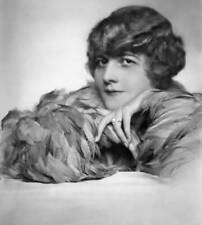
Countess Maria Therese Esterhazy 1920 Old Photo $6.02
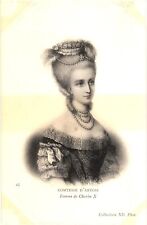
Maria Theresa of Savoy, Countess of Artois, Wife of Charles X Postcard $15.99
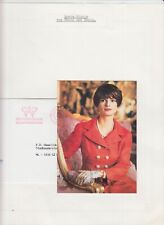
Maria Gloria von Thurn und Taxis, Original Autograph on Photo, Royalty (L6280) $78.40
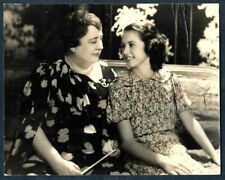
BUENA VISTA COUNTESS MARIA FRANCISCA O´REILLY GRANDAUGHTER CUBA 1939 Photo Y 175 $10.79
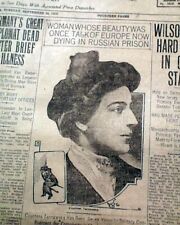
Countess MARIA TARNOWSKA Russian Woman Convict in Solitary Confinement 1912 News $39.00
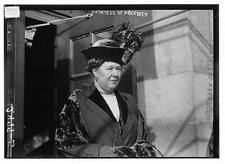
Countess of Aberdeen,Ishbel Maria Hamilton Gordon,1857-1939,Scottish author $9.99
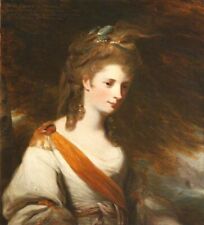
Oil Anna-Maria-Lewis-Countess-of-Dysart-as-Miranda-after-Joshua-Reynolds-John-Co $81.99
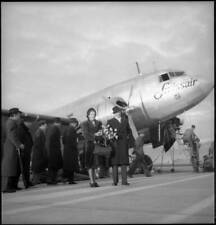
Dona Maria and Don Juan Countess and Count of Barcelona 1946 Old Photo $6.02
|